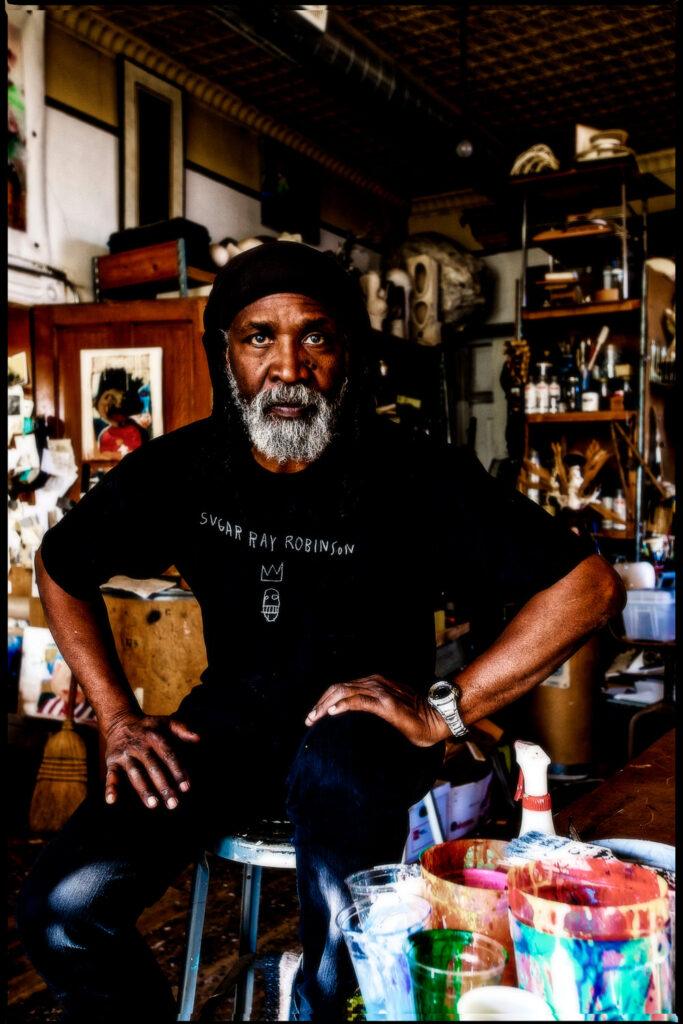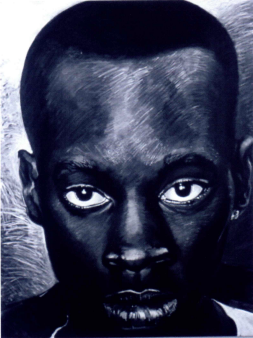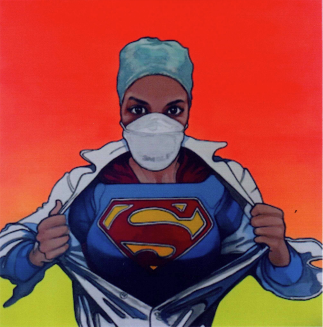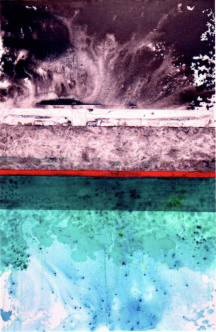
Floyd D. Tunson
If you visit our offices at the Philanthropy Collective in Colorado Springs, you will see the walls adorned with intricate artwork. Three years ago, the Sachs Foundation board, while looking for new offices, set aside funds to invest in art by local Black artists that celebrate the lived Black experience. Three stand-out pieces belong to a local artist named Floyd D. Tunson. As a 1965 Sachs Scholar, Floyd graduated in 1969 from Adams State University and continued to showcase his brilliance by becoming an established artist and using his skills to teach art to students for 30 years.
Floyd’s passion for art started when he was just five years old. His older brother, with a 13-year age difference, was his idol and mentor. Starting with just typing paper and watercolors, Floyd worked to recreate anything his brother did, ranging from people, to animals, to even landscapes. As Floyd developed his own art style, he branched out into every medium and genre imaginable. Drawing, painting, sculpting, figurative work, abstract work… If there is art to be created, Floyd is the first in line.
Out of the three pieces by Tunson, the first one visitors will see is Endangered 7. Created in 1995, Floyd explained,
“The 1990s were tragic for young African American men. A history of institutional racism resulting in poverty, alienation, and anger created a culture of drugs and violence. Based on U.S. Justice Department data, between 1980 and 2008 the victimization rate for Blacks was six times higher than for Whites; the offending rate for Blacks was almost eight times higher than for Whites. Young Black men became the endangered and the endangering.”
As a teacher during that time, Floyd felt compelled to create his Endangered series. Elaborating on his work in 2021, he wrote,
“As a high school teacher in that era, I would look around my classroom and wonder which path this or that student would ultimately take. The faces looking back at me were so young, so vulnerable that it broke my heart to think of any one of them being a homicide statistic. The way that I, as an artist, could express my sorrow was in the studio. That’s the impulse behind Endangered 7.”



A huge part of Floyd’s life is family, which he occasionally highlights through his art. Raising two more former Sachs Scholars, Java and Erika make their father incredibly proud with the work they do. Erika has followed in her father’s footsteps working in education as a principal at a local Colorado Springs school, while Java is an ER physician in Seattle, Washington. Hanging above the stairwell, another painting adorns our walls. Dr T was created during COVID’s peak to honor Java and the selfless hours she poured into her work. Dr T is a brightly colored piece that attracts viewers to his daughter; therefore, attracting attention to her cause. Floyd states,
“Throughout the COVID epidemic, Java and other health care professionals continue to jeopardize the physical and mental health of themselves and their families when they report for duty every day to treat the sick and, often, to inform families that a loved one has died. To me, she and they are nothing less than Superheroes.”
The final piece (for now) that shows Floyd’s art at the Philanthropy Collective is Redlining 4. This abstract painting requires some background knowledge to understand, so first learn about redlining here. Floyd best describes his abstract piece in relation to the history of redlining.
“For two reasons, I chose to represent redlining symbolically in this abstract painting. First, because I’m an artist, my primary intent is esthetic appeal, and I believe the colors and composition work on that level. Secondly, I used the contrasting palettes for each half of the painting because it’s a condensed way to suggest the historically deep divide between the two worlds of Blacks and Whites. Because art is a communication between artist and viewer, I leave it to the audience to engage with Redlining 4 and fill in the particulars.”
Floyd didn’t start exploring abstraction until his high school years. “It’s very difficult,” stated Tunson. “Abstraction is pure color, pure line. It’s just a different game. As with figurative work, it’s difficult to pursue abstraction, but sometimes you need a break from political figurative art.” Floyd’s love of abstract art came from the influence of his older brother who explored every art medium and genre possible. Luckily, the Redlining collection is still alive with ideas according to Tunson. “I’m still working on some pieces. I haven’t exhausted that yet.”
Throughout time, Floyd has been honest about his job as an artist and a teacher. “I think it’s a great time to be a young, Black artist right now,” Floyd told us while talking about the change of art culture. “Just now, it’s being recognized that Black artists have contributed just as much as any other abstract artists.” Reflecting on his 30 years of teaching, it unfolded how much has changed. “I got my position at Palmer High School because they didn’t have many Black male educators. I had to get leave from the military to interview.” After leaving the military and settling down in Colorado Springs to teach, he brought his passion to the classroom. “I didn’t have a lot of Black art students starting in 1971. I could almost count them on one hand.” However, the work he did has had a direct impact on so many students’ lives while deeply enriching his own.
“That’s some of the best fruit of teaching. I learn from students just as much as they learn from me. It’s reciprocal. I have a lot of former students that are artists, and I learn a lot from them still, especially with technical things that I just don’t know.”
Young artists can learn many lessons from Floyd D. Tunson. “If they can find their passion, they’ll be fine.” Despite the mountains that Tunson has climbed throughout his artistic career, he finds comfort in art after all these years.” It’s a passion, my life, my sanctuary. It’s what you wake up and want to do. It soothes you. I’m still doing art because it’s still an adventure. I’m still doing new things. I don’t want anything to look the same. It’s very easy to keep learning as long as you’re receptive.”
Feel free to swing by the Philanthropy Collective and see Floyd’s pieces in person, visit his website, or support his current show, Recombobulation: Curtis Center for the Arts Group Show (ends October 29, 2022).
Floyd Photo Credit: David Stevens
- Posted In:
- News

